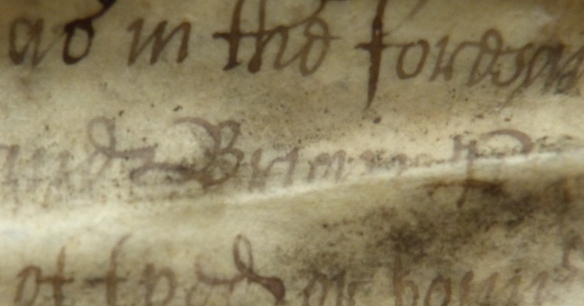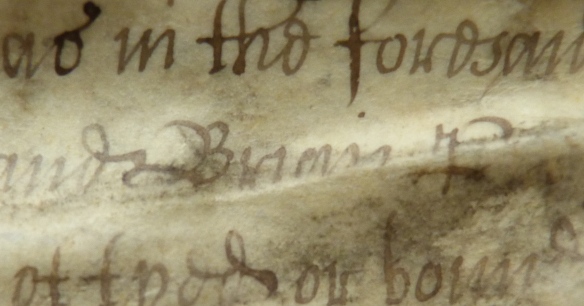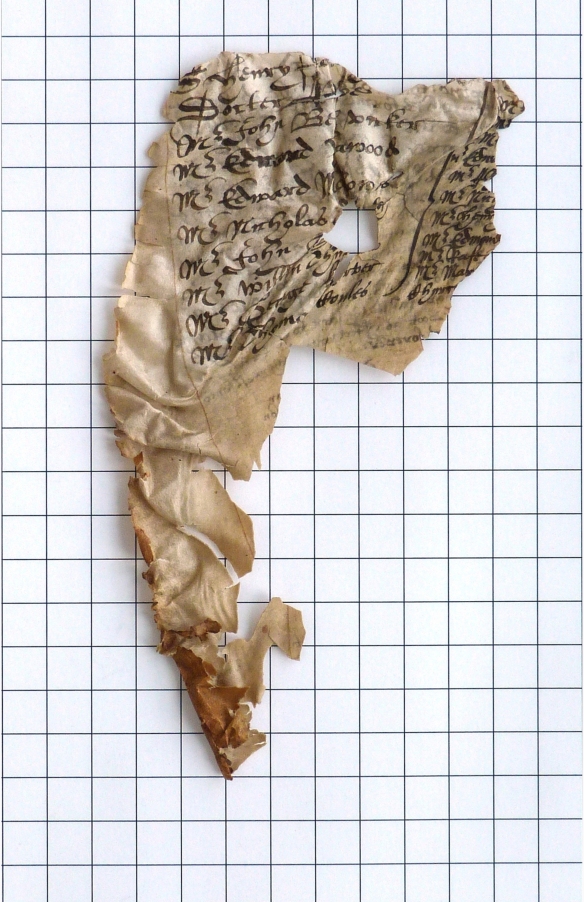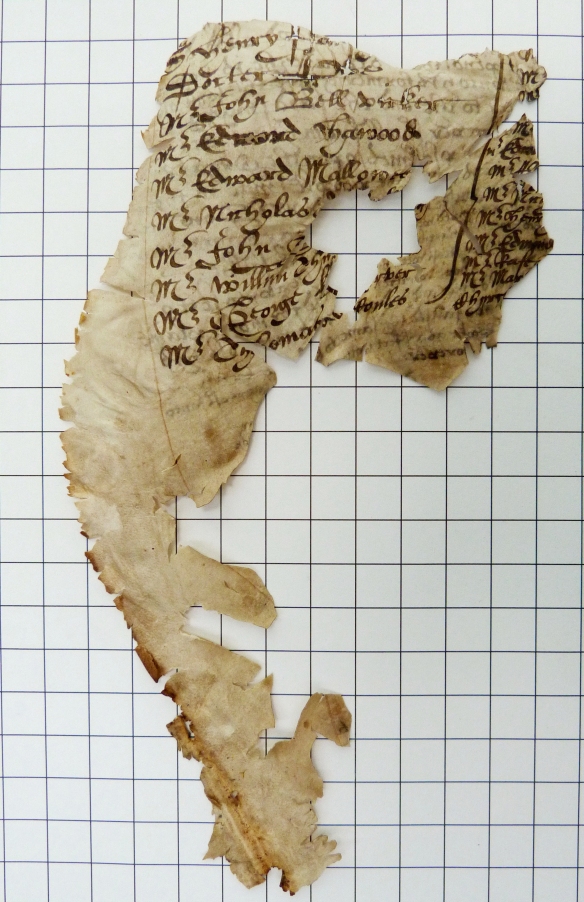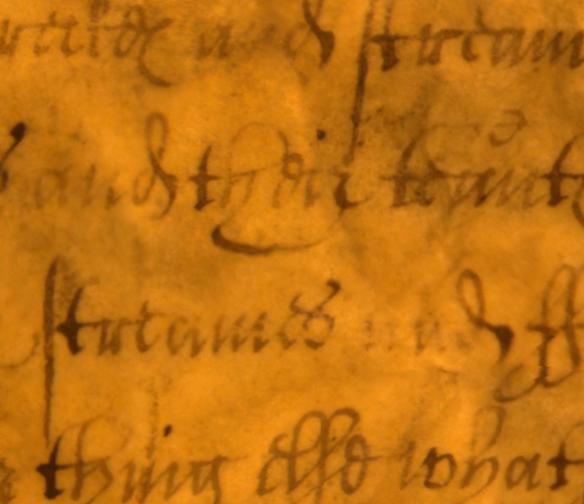Part 1
With all the tests we have carried out we are now ready to start to work on the Great Parchment Book!
Surface cleaning
Prior to humidification surface cleaning is being carried out using vulcanised rubber sponges and soft goat hair brushes. The sponge works by picking up and drawing in the dirt when it is placed in contact with the surface of the object to be cleaned. With the Great Parchment Book, ideally, we would like to remove as much surface dirt as possible from the parchment to stop it being drawn into the substrate when it absorbs moisture during humidification. Also, it helps to improve the legibility of the text. However, where flaky media is present, surface cleaning has to be avoided as the sponge will pick this up too.
The ink on the sample above is very stable and so the area could be cleaned. The sponge was most effective on the area in the middle, where the dirt was sitting loosely on the surface. However, the dirt in the bottom right hand corner of this image was much more ingrained, and so surface cleaning did not improve it.

